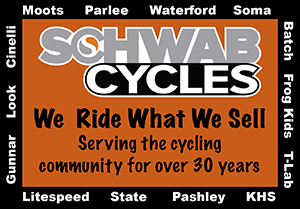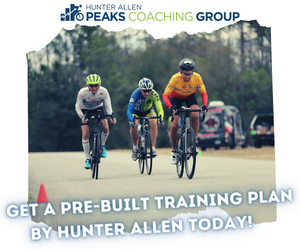

Why Fast Pedaling Makes Cyclists More Efficient
by Hunter Allen BS, Elite Coach

Back to list of training, fitness and health articles
Bill & Carol McGann's book The Story of the Giro d'Italia, Vol 1: 1909 - 1970 is available as an audiobook here. For the print and Kindle eBook versions, just click on the Amazon link on the right.
Hunter Allen writes:
Recently we reported that cyclists are usually more efficient on both hills and flat terrain when they pedal quickly (at about 80-85 rpm) rather than at slower cadences.
Now, a new study suggests that the greater efficiency may be related to the rapid rate at which glycogen is depleted in fast-twitch muscle fibers during slow, high-force pedaling.
To determine the actual effects of slow and fast pedaling on leg-muscle cells, scientists at the University of Wisconsin and the University of Wyoming asked eight experienced cyclists to cycle at an intensity of 85% V02max for 30 minutes under two different conditions.
In one case the cyclists pedaled their bikes at 50 revolutions per minute (rpm) while using a high gear. In the second case, the athletes pedaled in a low gear at 100 rpm. The athletes were traveling at identical speeds in the two instances, so their leg-muscle contractions were quite forceful at 50 rpm and moderate -- but more frequent -- at 100 rpm.
As it turned out, the athletes' oxygen consumption rates were nearly identical in the two cases, and heart and breathing rates, total rate of power production, and blood lactate levels were also similar.
However, athletes broke down the carbohydrate in their muscles at a greater rate when the 50 rpm strategy was used, while the 100 rpm cadence produced a greater reliance on fat.
The greater glycogen depletion at 50 rpm occurred only in fast-twitch muscle cells. Slow-twitch muscle cells lost comparable amounts of their glycogen at 50 and 100 rpm, but fast-twitch cells lost almost 50 percent of their glycogen at 50 rpm and only 33 percent at 100 rpm, even though the exercise bouts lasted for 30 minutes in each case.
This rapid loss of carbohydrate in the fast-twitch cells during slow, high-force pedaling probably explains why slow pedaling is less efficient than faster cadences of 80-85 rpm.
Basically, as the fast fibers quickly deplete their glycogen during slow, high-strength pedaling, their contractions become less forceful, so more muscle cells must be activated to maintain a particular speed. This activation of a larger number of muscle cells then leads to higher oxygen consumption rates and reduced economy.
This scenario, in which slow pedaling pulls the glycogen out of fast-twitch muscle cells, may sound paradoxical but it isn't; after all, slow pedaling rates are linked with high gears and elevated muscle forces, while fast cadences are associated with low gears and easy muscle contractions.
Since fast-twitch fibers are more powerful than slow-twitch cells, the fast-twitch fibers swing into action at slow cadences, when high muscular forces are needed to move the bicycle along rapidly.
On the other hand, "fast" pedaling rates of 80-100 rpm are not too hot for the slow-twitch cells to handle. Slow-twitch cells can contract 80-100 times per minute and can easily cope with the forces required to pedal in low gear.
Another possible paradox in the Wisconsin/Wyoming research was that fast pedaling led to greater fat oxidation, even though maximal fat burning is usually linked with slow-paced efforts.
Basically, the higher fat degradation at 100 rpm occurred because the slow-twitch cells handled the fast-paced, low-force contractions. Slow-twitch fibers are much better fat-burners than their fast-twitch neighbors.
Fortunately, there's a bottom line to all this: During training and competition, cyclists should attempt to use fast pedaling rates of 80-85 rpm, both on the flat and on inclines.
Compared to slower cadences, the higher pedaling speeds are more economical and burn more fat during exercise. Ultimately, the high pedaling rates also preserve greater amounts of glycogen in fast-twitch muscle fibers, leading to more explosive "kicks" to the finish line in closing moments of races. (European Journal of Applied Physiology, 1992)
Hunter Allen is an Elite Coach, ex-professional cyclist, co-creator of Cycling Peaks Software, and co-owner of the Peaks Coaching Group. He is a regular presenter for USA Cycling on the topic of training with power for their coaches education program. Hunter has raced as a member of the Navigators Cycling Team nationally, in Europe and S. America and has helped hundreds of athletes from all walks of life take their training to the next level. You can reach Hunter Allen online at hunter@peakscoachinggroup.com..








